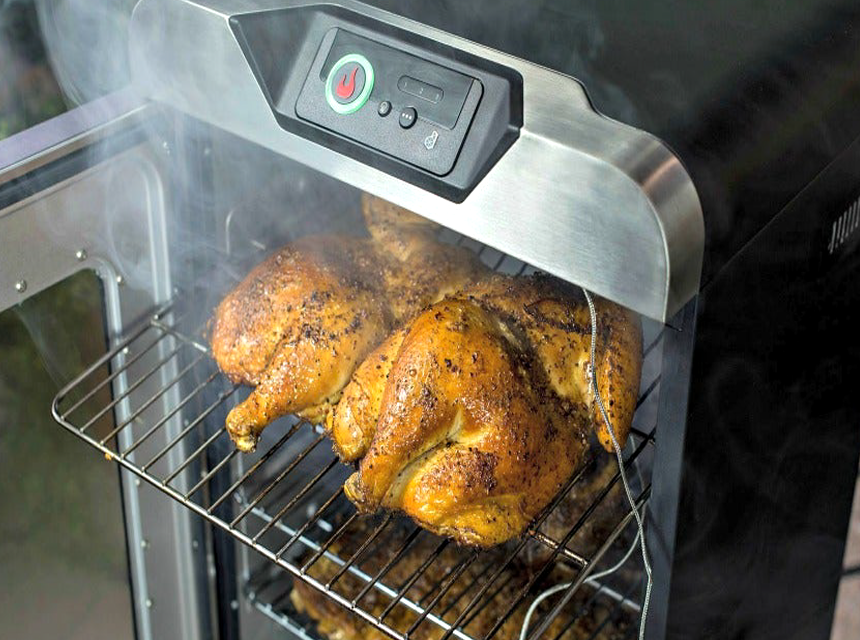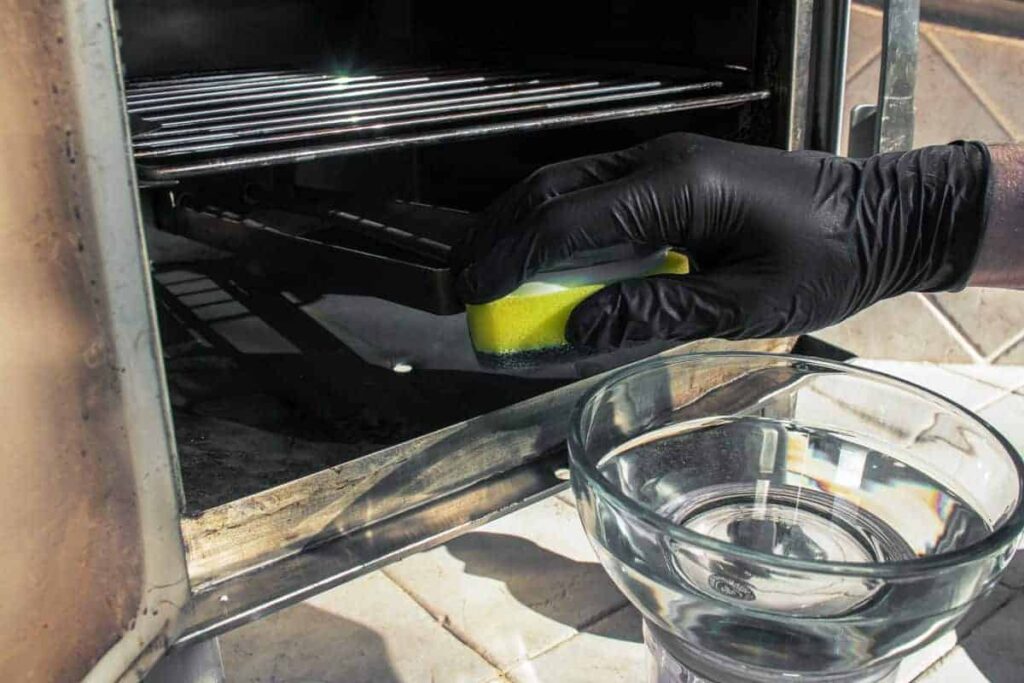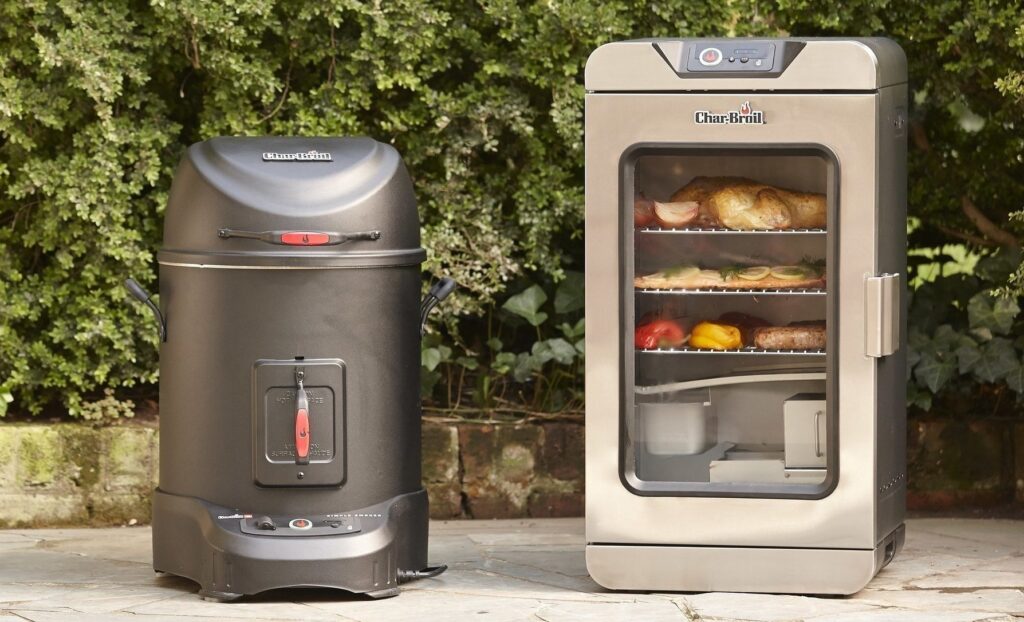Smoking is a cooking process where long exposure to heat and smoke adds flavor and tenderizes meat and fish. This process has been used for thousands of years to preserve and provide antibacterial properties to meat. Nowadays, smoking is prized for its flavor, texture, and ability to convert even tough, cheaper cuts of meat into barbeque gold. But which cuts of meat are best to cook in a smoker? The answer likely depends on your skill level and equipment.
Beginners wanting to try smoking meat should first do it on the barbeque that they already own with inexpensive cuts of meat. To add smoke to your existing grill, first soak some wood chips like hickory, cherry, or apple, and roll them into a tinfoil packet. Next, poke a few holes through the foil with a fork, place it over a lit burner, and let the smoke start to build in your grill. Finally, place the meat over an unlit burner and cook until the desired internal temperature of the meat is reached. Don’t keep opening the lid, or you will lose all of that flavorful smoke.
Beginners should start with relatively easy-to-smoke and lower-cost meat such as sausages or salmon. You can get to know their preferences and gain experience without committing to an expensive or difficult cut like a whole brisket. When in doubt, always smoke meat low and slow, and watch the thermometer, not a clock when smoking meat.
Typically, smoking works best on meat with plenty of fat and connective tissue. These provide moisture for the meat, slowly tenderizing, melting, and rendering as it cooks in the smoker. Aim for a piece of meat with plenty of intramuscular fat instead of one with just a large fat cap on the side because the fat is already throughout the meat and will give it flavor and moisture.
Sausages are a great introduction to smoking because they have a high ratio of fat mixed throughout, and the casings make it hard for the moisture to escape. They take about 3 hours at 225-250℉ and then can be cooked over the flame to make the outside crispy. Because sausages have much flavor, it might be difficult to notice subtle differences between different woods. Salmon is another great choice for beginner smokers because it also has a fair amount of oil throughout and is less likely to dry out while cooking for about an hour at 225°F.
With more experience operating a smoker (and watching countless YouTube videos), you may find that using foil packets on a gas grill no longer cuts it, and you may want to upgrade your equipment and smoke more challenging cuts of meat. Before you rush out to buy a brisket, try some intermediate cuts first, like chicken, ham, or a roast.
Because chicken doesn’t have an overpowering flavor, it’s the perfect meat for testing which wood smoke flavor you prefer. Chicken cuts like the breasts are lean, so you need to watch that it does not dry out too much. A meat thermometer is recommended, but it will take about an hour at 225℉. If you feel adventurous, you could smoke a whole chicken for about 3-5 hours at 250℉ or until a thermometer inserted into the thickest part of the thigh registers at least 165℉. Smoked chicken adds tons of flavor to fajitas or a creamy pasta dish.
Hams and roasts are perfect for an intermediate smoker because they are fairly forgiving but still need to be watched. Hams typically need to be smoked for about 6 hours at 225℉ or until the internal temperature reaches 150℉. Although some roasts can be smoked, leaner roasts are not recommended. A fatter roast like a prime rib roast has fat throughout but is a premium cut, so we think that it is best reserved for those with experience. Prime rib roasts vary in size, so plan to smoke for 40 minutes per pound at 225℉ for a medium roast or until the internal temperature reaches 140 ℉.
With practice, you will have more successes than failures and ready to smoke the challenging cuts like ribs, pork butt, and brisket. These cuts were once cheap, chewy cuts that no one wanted, but they have become very popular as smokers enter more suburban backyards. These cuts are far too advanced for a beginner because they are expensive and difficult to cook.
Ribs are delicious when smoked, but they need extra care to ensure they’re perfect every time. One proven method is to smoke them for three hours at 225℉, then wrap them in foil (with a quick splash of apple cider, beer, wine, or another flavor enhancer) and return them to the smoker for two hours. Lastly, unwrap the ribs and add your favorite sauce, and smoke for one final hour. The result is fall-off-the-bone delicious ribs.
Pork butt (or Boston butt, pork shoulder, picnic shoulder) is popular for pulled pork and has plenty of fat and connective tissue, making it tender, juicy cut when smoked. Pork butt is also available in 4-8 pound chunks, so it is a little easier to manage. They are cheaper and more forgiving than a brisket.
Briskets are a chewy cut of meat, but when a brisket is smoked at low temperatures for many hours, it becomes soft, juicy, and forms a delicious crust called bark. Briskets are big cuts, can be expensive, and are very unforgiving for beginners. Briskets typically take 1.5 hours per pound, but the wait is worth it.
Smoking meat does not have to be overly complex or intimidating. Depending on your experience level and equipment, you can start simply and build up your experience one delicious meal at a time before tackling the more difficult cuts. Due to an increase in popularity of backyard smokers, the meat best suited for smokers is more popular as well. You can find meat perfect for the smoker at a grocery store or local butcher, but there might be a simple way to ensure consistent quality. Meat delivery services like truLOCAL Trusted Source truLOCAL: USA Local Meat Delivery truLOCAL is the easiest way to order quality meats online. We offer sustainable meat delivery services across the USA. Order your custom meat box today! trulocalusa.com work with local farmers to get high-quality meat delivered frozen to your door every month. Make sure to fully defrost any meat that is headed into a smoker and enjoy the process.





